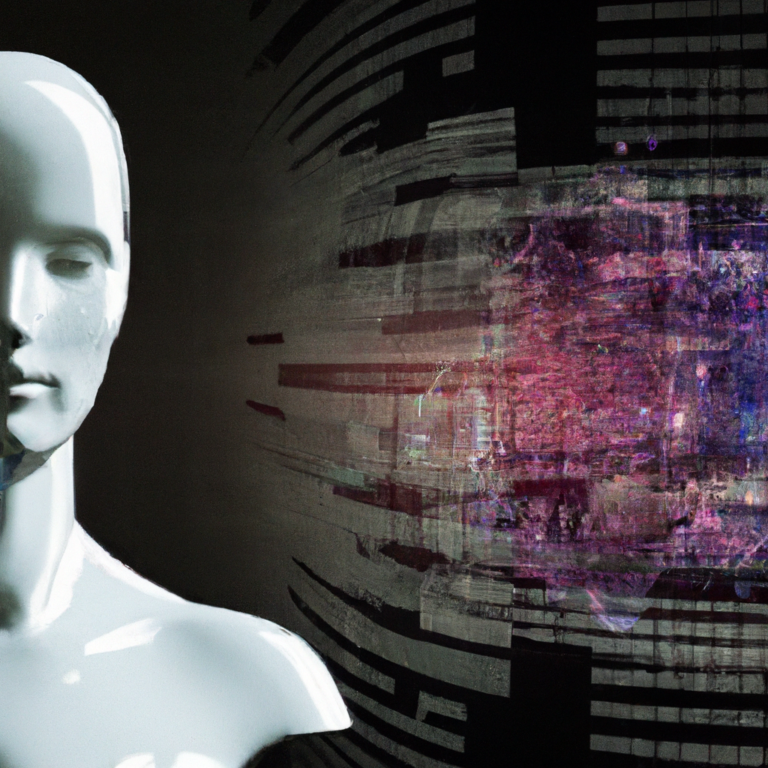How To Build A Chatbot With Python
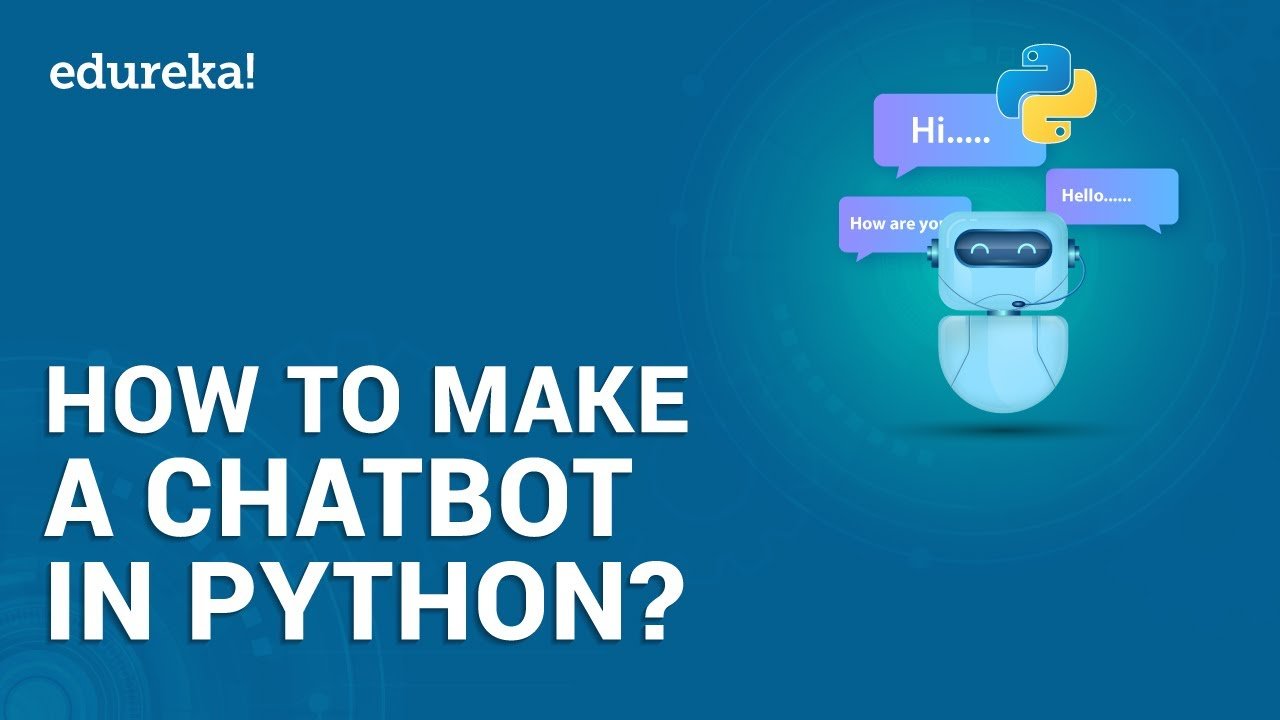
In this article, you will discover a step-by-step guide on how to create your very own chatbot using Python. From setting up the necessary tools and libraries to implementing natural language processing and machine learning algorithms, this comprehensive tutorial will equip you with all the knowledge you need to build a functional and engaging chatbot. Whether you’re a beginner or an experienced programmer, this article will provide you with the necessary resources and instructions to unlock the exciting world of chatbot development with Python. So, let’s get started on this exciting journey!
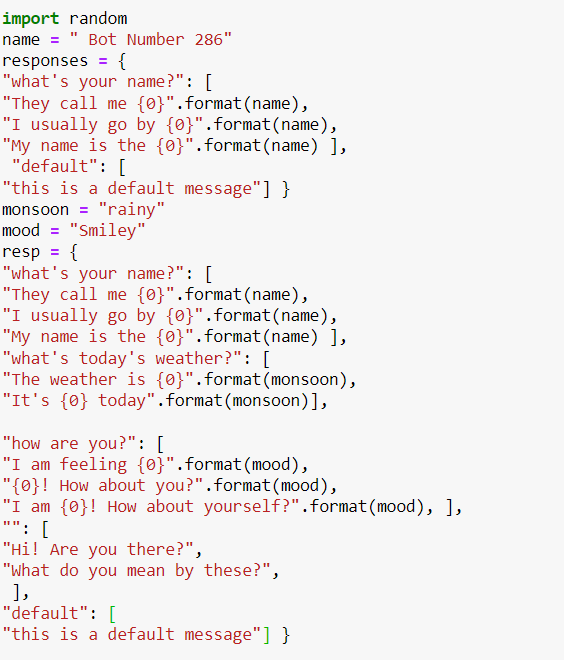
This image is property of editor.analyticsvidhya.com.
Choosing a Framework
Introduction to chatbot frameworks
When it comes to building a chatbot, using a framework can greatly simplify the development process. A chatbot framework provides a pre-built structure and set of tools that can be used to create and deploy chatbots more efficiently. These frameworks come with various features and functionalities that can be customized to suit the specific requirements of your chatbot project. In Python, there are several popular chatbot frameworks to choose from, each with its unique strengths and advantages.
Popular chatbot frameworks in Python
Python offers a range of powerful frameworks that can be used to build chatbots. Some of the most popular ones include:
-
ChatterBot: ChatterBot is a library that enables developers to build chatbots with ease. It uses machine learning algorithms to generate responses based on predefined training data.
-
Rasa: Rasa is an open-source framework that provides tools for building conversational AI. It allows developers to create chatbots that can understand natural language and provide contextually relevant responses.
-
NLTK: NLTK (Natural Language Toolkit) is a Python library that provides tools and resources for working with human language data. It can be used for various chatbot tasks such as text classification, stemming, tagging, and parsing.
-
TensorFlow: TensorFlow is a popular machine learning framework that can be used for building chatbots. It provides a high level of flexibility and scalability, making it suitable for complex chatbot projects.
Choosing the right framework will depend on your specific requirements and skillset. Consider factors such as ease of use, available features, documentation, and community support before making a decision. Additionally, it can be helpful to try out a few frameworks to evaluate their performance and compatibility with your project.
Setting Up Environment
Installing Python
Before getting started with building a chatbot, you will need to have Python installed on your system. Python is a widely used programming language known for its simplicity and ease of use. It has a vast ecosystem of libraries and frameworks that can be leveraged for various purposes, including chatbot development.
To install Python, you can visit the official Python website (https://www.python.org/) and download the latest version of Python for your operating system. Follow the installation instructions provided to set up Python on your machine.
Installing necessary libraries
Once you have Python installed, you will need to install the necessary libraries and dependencies for building your chatbot. The specific libraries required will depend on the framework you choose to work with.
For example, if you decide to use ChatterBot, you can install it by running the following command in your command prompt or terminal:
pip install chatterbot Similarly, for Rasa, you can install it by running:
pip install rasa Before installing any library, it is recommended to create a virtual environment to keep your project’s dependencies separate from your system’s Python installation. This can be done using tools such as virtualenv or conda.
By setting up your environment correctly and installing the necessary libraries, you will be ready to start building your chatbot.
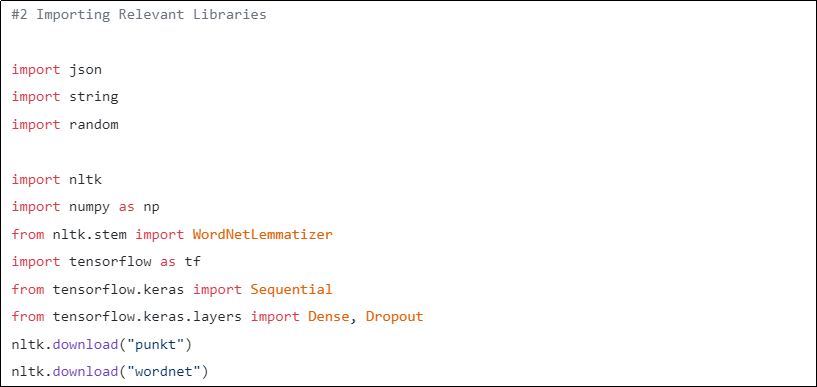
This image is property of daxg39y63pxwu.cloudfront.net.
Designing the Chatbot
Defining the chatbot’s purpose
Before diving into the implementation details, it is important to clearly define the purpose of your chatbot. Understand the problem it is expected to solve and the goal it should achieve. This will help guide your design decisions throughout the development process.
Consider whether your chatbot will be used for customer service, information retrieval, entertainment, or any other specific purpose. This will influence the features and functionalities you need to incorporate into your chatbot.
Determining the chatbot’s features
Once you have defined the purpose of your chatbot, you can start determining the features it should have. Make a list of the capabilities you want your chatbot to possess. This could include features like natural language understanding, sentiment analysis, context awareness, or integration with external APIs.
Prioritize the features based on their importance and feasibility. It is important to strike a balance between providing useful functionalities and keeping the development process realistic and manageable.
Creating a user-friendly interface
The user interface (UI) of your chatbot plays a crucial role in determining the overall user experience. A well-designed and user-friendly interface can make interacting with your chatbot more intuitive and enjoyable.
Consider the platforms on which your chatbot will be deployed. Will it be a web-based chatbot accessible through a browser? Or will it be integrated into a messaging application like Facebook Messenger or Slack? Tailor your UI design accordingly to ensure seamless user interaction.
Keep the design simple and avoid overwhelming users with too many options. Use clear and concise language and provide ample guidance for users to understand how to interact with the chatbot effectively.
Training Data
Collecting initial training data
To teach your chatbot how to respond to user inputs, you will need to provide it with training data. This data will help the chatbot learn patterns and generate appropriate responses.
Start by gathering a variety of sample conversations that are relevant to your chatbot’s purpose. These conversations can be obtained from existing chat logs, customer support tickets, or online forums. Aim for a diverse range of conversations to ensure your chatbot can handle different scenarios.
Cleaning and preprocessing the data
Before using the training data, it is important to clean and preprocess it. This involves removing any irrelevant or duplicate conversations, correcting typos or grammatical errors, and standardizing the format of the data.
You can use Python libraries such as NLTK or spaCy to perform text preprocessing tasks like tokenization, stop word removal, and stemming. These preprocessing steps will help improve the quality of the training data and enhance the performance of your chatbot.

This image is property of i.ytimg.com.
Natural Language Processing
Understanding text inputs
To enable your chatbot to understand and process user inputs, you will need to incorporate Natural Language Processing (NLP) techniques. NLP involves the analysis and interpretation of human language to extract meaning and context.
Using NLP algorithms, you can parse user inputs and extract relevant information such as intents, entities, and sentiment. This information can then be used to generate appropriate responses.
Implementing NLP algorithms
There are several NLP algorithms and techniques that can be used to enhance the capabilities of your chatbot. Some common techniques include:
-
Named Entity Recognition (NER): This algorithm identifies and classifies named entities in text, such as names, locations, or dates. NER can be used to extract important information from user inputs.
-
Sentiment Analysis: Sentiment analysis determines the emotional tone or sentiment expressed in a piece of text. By analyzing the sentiment of user inputs, you can tailor your chatbot’s responses accordingly.
-
Topic Modeling: Topic modeling algorithms can be used to identify the main topics or themes in a collection of text. This can help your chatbot understand the context of user inputs and generate relevant responses.
Implementing these algorithms and techniques will require the use of specialized libraries and tools. Python provides a wide range of NLP libraries, such as NLTK, spaCy, and scikit-learn, that can be leveraged for these tasks.
Creating Responses
Generating predefined responses
One way to generate responses for your chatbot is by using predefined responses. These responses are pre-written and stored in your chatbot’s knowledge base. When a user input matches a predefined pattern, the corresponding response is retrieved and provided to the user.
To create predefined responses, you can manually define a set of questions and answers or use existing conversation data. This approach works well for simple and predictable interactions and can be easily implemented using if-else statements or regular expressions.
Building rule-based responses
In addition to predefined responses, you can also create rule-based responses for your chatbot. Rule-based responses involve defining a set of rules or patterns that the chatbot follows to generate responses.
For example, you can define rules based on specific keywords or phrases in user inputs. If a user input contains a certain keyword, the chatbot can respond with a predefined message or perform a specific action.
Building rule-based responses allows for more dynamic and context-aware interactions. However, it requires careful consideration of the rules and patterns to ensure accurate and relevant responses.
Using machine learning for responses
Machine learning techniques can be used to generate responses for your chatbot. By training a machine learning model on your training data, you can teach your chatbot to analyze and understand user inputs and generate appropriate responses.
One common approach is to use sequence-to-sequence models, such as Recurrent Neural Networks (RNN) or Transformers. These models learn the mapping between input sequences and output sequences and can be trained to generate text responses.
Using machine learning techniques can make your chatbot more advanced and capable of handling complex scenarios. However, it requires a significant amount of training data and computational resources for training the models.
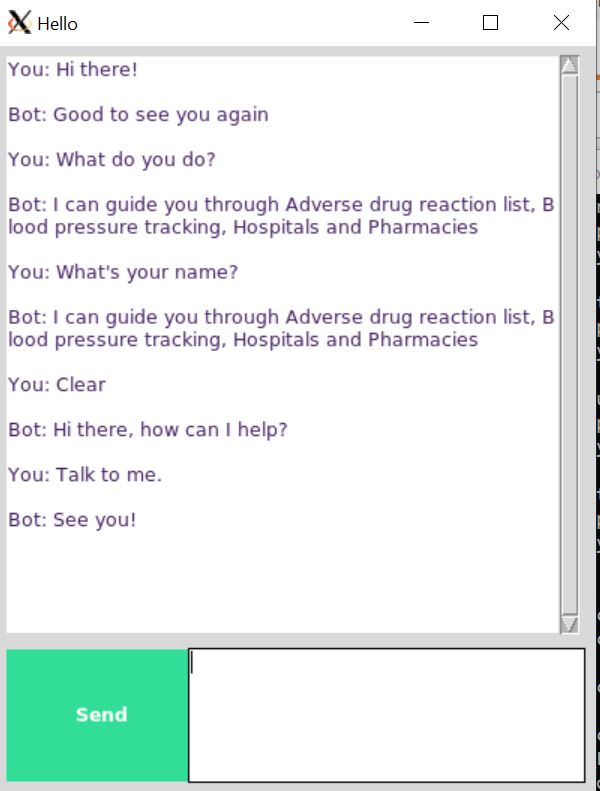
This image is property of miro.medium.com.
Integration with APIs
To provide additional functionality and enhance the capabilities of your chatbot, you can integrate it with external APIs. APIs (Application Programming Interfaces) allow your chatbot to interact with external services and access a wide range of data and functionalities.
For example, you can integrate your chatbot with a weather API to provide real-time weather updates, or with a database API to retrieve and store user information.
To integrate your chatbot with an API, you will need to send HTTP requests to the API endpoints and process the responses. Python libraries such as requests and urllib can be used to handle API integration tasks.
Testing and Debugging
Writing test cases
Testing is an important step in the development process to ensure the functionality and performance of your chatbot. By writing test cases, you can systematically validate different aspects of your chatbot, such as input handling, response generation, and error handling.
Start by defining test cases that cover different scenarios and edge cases. This includes positive and negative test cases, boundary values, and stress testing. Create a set of input-output pairs and verify that the chatbot produces the expected outputs for each input.
Debugging common chatbot errors
During the testing phase, you may encounter errors or bugs in your chatbot. Common chatbot errors include misclassification of intents, incorrect responses, or crashing due to unexpected inputs.
To debug these errors, make use of logging and error handling mechanisms. Log relevant information during the execution of your chatbot to identify the root cause of the errors. Implement exception handling to gracefully handle unexpected inputs and prevent crashes.
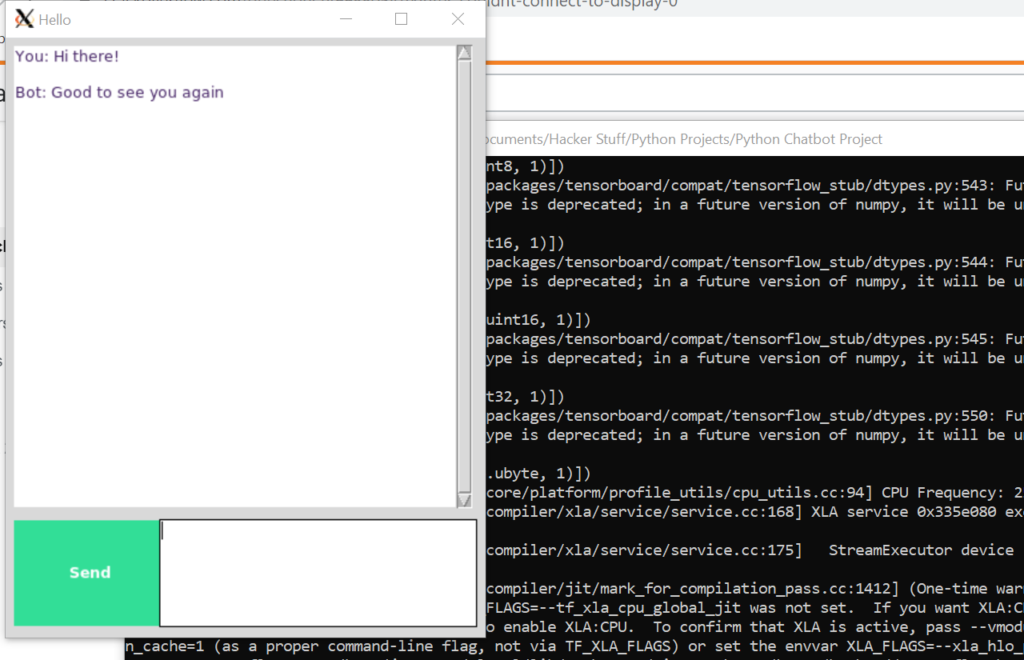
This image is property of miro.medium.com.
Deployment
Choosing a hosting platform
Once you have finished developing and testing your chatbot, it is time to deploy it to a hosting platform. There are several hosting platforms available that support Python applications, such as Heroku, AWS, or Azure.
Consider factors such as scalability, cost, ease of deployment, and integration capabilities when choosing a hosting platform. Evaluate the specific requirements of your chatbot project and select a platform that best suits your needs.
Deploying the chatbot
Deploying a Python chatbot typically involves packaging your application into a deployable format and configuring the hosting environment. Specific deployment steps may vary based on the hosting platform you choose.
For example, if you decide to deploy your chatbot to Heroku, you will need to create a Procfile and requirements.txt file, specify the necessary dependencies, and configure the deployment settings. Once configured, you can deploy your chatbot by pushing your code to the remote repository.
Ensure that your deployed chatbot is accessible to users and the necessary configurations are set up correctly.
Improving and Updating
Collecting user feedback
Once your chatbot is live, it is important to gather user feedback to continuously improve its performance and usability. User feedback can provide valuable insights into areas of improvement, new features to add, or bugs to fix.
Collect feedback through surveys, user interviews, or by analyzing user interactions and patterns. Consider integrating feedback mechanisms within your chatbot to make it easy for users to provide their thoughts.
Updating and improving the chatbot
Based on the user feedback you collect, iteratively update and improve your chatbot. This can involve adding new features, refining existing functionalities, or addressing any issues or bugs that arise.
Regularly retrain your chatbot with new training data to improve its conversational abilities. Stay up-to-date with new technologies, frameworks, and advancements in the chatbot space to ensure your chatbot remains competitive and relevant.
By continuously updating and improving your chatbot, you can provide a better user experience and meet the evolving needs of your users.
In conclusion, building a chatbot with Python involves a systematic approach that encompasses various stages, from choosing the right framework to deploying and updating the chatbot. By following the steps outlined in this article, you can develop a powerful and user-friendly chatbot that meets your specific requirements. Remember to consider the purpose, features, and interface design of your chatbot, as well as leverage NLP techniques and integration with external APIs for enhanced functionality. With continuous testing, debugging, and user feedback, you can refine and improve your chatbot over time.



